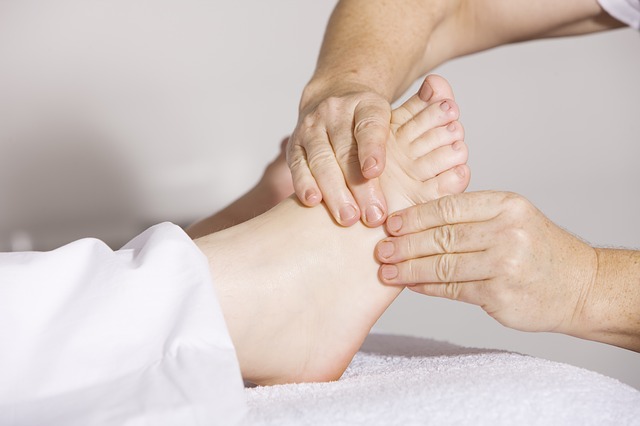Reflexology (zone therapy) is an alternative medicine method by using the physical act of applying pressure to the feet and hand with specific thumb, finger and hand techniques without the use of oil or lotion.
It is based on a system of zones and reflex areas that reflect an image of the body on the feet and hands with a premise that such work effects a physical change to the body.
A 2009 systematic review of randomised controlled trials concluded that the latest available evidence does not show convincingly that reflexology is an effective treatment for any medical condition.
The Reflexology Association of Canada defines reflexology as:
“A natural healing art based on the principle that there are reflexes in the feet, hands and ears and their referral areas within zone related areas, which correspond to every part, gland and organ of the body.
Through application of pressure on these reflexes without the use of tools, crèmes or lotions, the feet being the primary area of application, reflexology relieves tension, improves circulation and helps promote the natural function of the related areas of the body.”
There is no consensus among reflexologists on how reflexology is supposed to work; a unifying theme is the idea that areas on the foot correspond to areas of the body, and that by manipulating these one can improve health through one’s qi.
Reflexologist say that the body is divided into ten equal vertical zones, five on the right and five on the left. There are also three transverse lines, the upper region of the shoulder girdle, the waistline, and the pelvic floor.
Concerns have been raised by medical professionals that treating potentially serious illnesses with reflexology, which has no proven efficacy, could delay the seeking of appropriate medical treatment.
Reflexology is recommended as a complementary therapy and should not replace medical treatment.
A systematic review of the efficacy of reflexology found one study showing a statistically significant effect in the treatment of urinary symptoms in multiple sclerosis patients. All other conditions reviewed in this study showed no evidence of any specific effect.
Reflexologists posit that the blockage of an energy field, invisible life force, or Qi, can prevent healing. Another tenet of reflexology is the belief that practitioners can relieve stress and pain in other parts of the body through the manipulation of the feet.
One scientific explanation may be that the pressure received in the feet may send signals that balance the nervous system or release chemicals such as endorphins that reduce stress and pain.
These hypotheses are rejected by the general medical community, who cite a lack of scientific evidence and the well-tested germ theory of disease.
Many civilizations have practiced reflexology. Evidence of this has been documented on four continents: Asia, Europe, Africa, and North America.
The most common theory is that the earliest form of reflexology originated in China, as much as 5000 years ago. The early Taoists are credited with originating many Chinese health practises.
The Cherokee tribes of North America to this day practise a form of reflexology that they continue to pass from generation to generation. Reflexology travelled across India, Japan, Asia, and China.
Traditional East Asian foot reflexology is called Zoku Shin Do. This is the foot portion of the Japanese massage technique.
The roots of Zoku Shin Do go back to ancient China and are over 5000 years old. Many changes took place in zone therapy, or reflexology, as new knowledge was added.
In China, reflexology reached a new level. The practice of acupressure using the fingers turned into the practice of acupuncture using needles.
The study of the reflex points still existed, but the knowledge was linked or added to and taken in a new direction—the direction of meridians. The Chinese concept of meridian therapy is an important part of the foundation of reflexology.
The precise relationship between the ancient art practiced by the early Egyptians and reflexology as we know it today is unclear because different practices involving the manipulation of the feet to affect health have been used throughout the world.
You can find much more information on living a holistic lifestyle in these free magazines and on our YouTube channel.
Information courtesy of wikipedia






